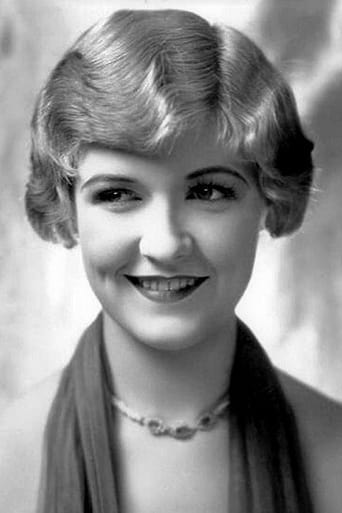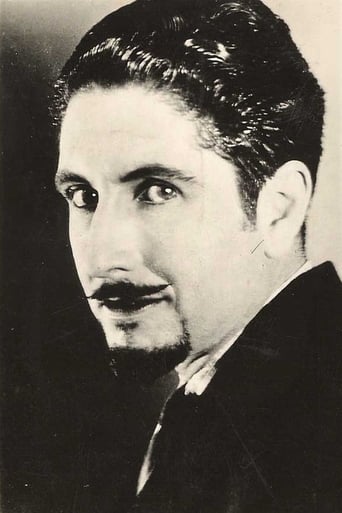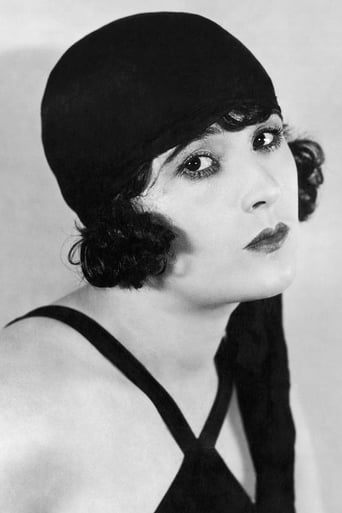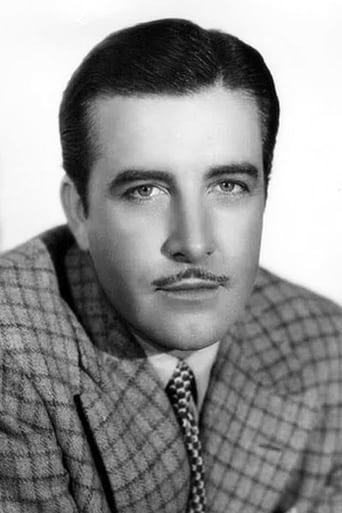BootDigest
Such a frustrating disappointment
AnhartLinkin
This story has more twists and turns than a second-rate soap opera.
Bergorks
If you like to be scared, if you like to laugh, and if you like to learn a thing or two at the movies, this absolutely cannot be missed.
Deanna
There are moments in this movie where the great movie it could've been peek out... They're fleeting, here, but they're worth savoring, and they happen often enough to make it worth your while.
calvinnme
Essentially this is part "Cat and the Canary" and part "Phantom of the Opera" - also silent Universal properties. It has some slack parts but the visual atmosphere helps to cover them up, and it has some very inventive title cards where the writing may be initially blurry and come into focus, or the writing may start up clear and then appear to melt down the page, or it may appear to be underwater.The film is about an actor, John Woodford, in a theatre on Broadway, who dies suddenly when he gets to the part of the play where he is backed into the fireplace by another actor and picks up a candlestick. The lights go out, and when they come back on there is Woodford dead on the floor. The police come to question everybody who was present, then Woodford's body disappears before the coroner gets there. It is discovered by the police that Woodford and another actor, Richard Quayle (John Boles) were arguing in actress Doris Terry's (Laura LaPlante's) dressing room, and both were suitors of hers.So without a body, the investigation cannot go on, the theatre is closed, and the papers are shown having a field day with the "love triangle" that is insinuated to have something to do with the killing. Several years later, Woodford's close friend (Montagu Love as Arthur McHugh) decides to reopen the theatre with the same cast as the night of the killing and the same play. Why does the entire cast return? Because to not return would make them look guilty.But somebody does not want the play to open. Heavy scenery comes crashing down. Smoke bombs go off. Threatening letters are written to members of the cast that they perform at their peril, and some mysterious masked figure is running and jumping about the place and even stealing Doris' purse and putting her personal possessions in strategic places to make her look like she is in on all of the strange happenings. Is it the ghost of John Woodford trying to avenge himself? Well of course not. But it might be the real John Woodford, having faked his own death, and still mad at Boles and LaPlante for his romantic rejection. Watch and find out what is behind all of this.The visuals are just great here. The opening scene reminds me somewhat of 1929's Broadway with all of the pictures of the Broadway nightlife of 1929. Also, the theatre, from the outside, looks like the face of some frightening creature complete with eyes, a nose, and mouth. I just wish better prints were available.
Johan Louwet
Well silent movies tend to move slow but there are exceptions. We have Midnight Faces, The Bat, The Cat and The Canary and also this movie. Midnight Faces is just a chaotic mess. The Bat and The Cat and The Canary have the right pace, alternating between slow and fast sequences but still giving enough attention to introducing each character and giving them some kind of personality. The latter is a bit the problem with The Last Warning. It has plenty of atmosphere and the theatre is a great setting to have this murder mystery picture. However characters are barely given introduction or much depth. So often I was wondering OK who is who again. The director obviously went for visuals and action instead of a strong plot and proper character development. Still I think it's worth a re-watch.
kidboots
"Broadway - electric highway of happiness" and instantly you are treated to a golden (my copy was tinted) visual treat, a montage of high stepping chorus girls, glittering lights showing the Strand and Madison Square Garden that soon turn to police lights and sirens - there has been a murder committed at the Woodford Theatre!! Paul Leni and his cameraman Hal Mohr find some fantastic camera angles (Margaret Livingston is first glimpsed, from a camera positioned on the floor, stepping over a spider's web). Like "The Cat and the Canary" spider's webs feature prominently in the second half. Much of the film is set in an old theatre that was originally constructed for the Paris Opera sequences in "The Phantom of the Opera"(1925).The leading actor John Woodford has fallen dead on stage while clutching a candlestick and even though chloroform has been discovered dripping on stage it is still too baffling for the police to solve, especially as the body disappears!! There is another fabulous montage of newspaper headlines showing the police are baffled and the leading lady Doris Terry (Laura La Plante) and stage director Richard Quayle (a very young John Boles) once lovebirds, have now separated due to doubts and anxiety.Suddenly the theatre, after years of gloom, is due to open again with sunlight streaming through the musty windows and cobwebs filling the screen. And even though new owner, Arthur McHugh (Montague Love) has had an ominous warning from the ghostly John Woodford, he is determined to forge ahead by staging the last play presented, along with the original cast members. But is he who he claims to be? It is Montague Love after all, a master villain of the silent screen!! Another message "Beware, let the dead sleep" is ignored and Harvey Carleton (Roy D'Arcy) is given Woodford's old part and is thrilled - until he receives a ghostly calling card!!From then on hijinks abound - suspended scenery crashes onto the stage, a fire starts when all the cast are closeted in a dressing room, the chair on the stage disappears. La Plante must have felt a "Cat and the Canary" type deja vu, with wizened hands emerging from wall panels etc but really, after a while, the film takes on a "Phantom of the Opera" persona as a flitting figure climbs balconies, shimmies ropes and strides up rickety stairs, having a first hand knowledge of the ins and outs of the musty old theatre. Helped enormously by Leni's masterful direction and Hal Mohr's fluid camera-work. At times the camera seems attached to the rope as he swings from balcony to landing with hands grappling at the camera as he just evades their capture.An all star cast helped with La Plante perfecting her hand to mouth, stricken face and screaming stance. John Boles suitably wooden (was he any other way) and Margaret Livingston at her vampish best. Love the end title "It's a Universal Picture, how did you like it? Write to me with your opinion"!! Just too cute!!
galensaysyes
Another idiot plot, similar to that of "London after Midnight": An actor is killed on stage. The theatre is shut down and rumored to be haunted by the actor's ghost. Long after the murder, a policeman with 'way too much time on his hands reopens the theatre to restage the production with the original cast (uh, with a new leading man). A couple of people refuse to go along but are scared that if they don't, it will make them look guilty. (Huh?) Someone terrifies the actors in ways that would terrify nobody, e.g. by leaving notes like "Do not do this play--Signed, my ghost." A mysterious figure skulks around in a creepy mask. The policeman's plan in re-creating the production is to bring the murderer to light; what he has in mind is unclear, but luckily for him the murderer obligingly duplicates the crime--like there's a rule he has to. His motive and means seemed unlikely to me, but who knows with these theatre people?In short, a silly, silly plot. But Leni directs it very deftly. I'm not a fan of his "Cat and the Canary," despite some inventive shots: the lead is unfunny, the tone keeps varying, and the play (none too great to start with) is fragmented. The movie looks to me as if it had undergone much re-editing. By contrast, this and "The Man Who Laughs" are just as inventive but much more sure-handed. Of course "The Man Who Laughs" is serious and this one isn't, but it's visually lively all the way through and the actors are well used. Montague Love is as good as always and John Boles gives the leading man more depth than he probably deserves. Laura la Plante's wide-eyed close-ups remind me somewhat of Fatty Arbuckle's, but Leni may have had his tongue in his cheek there.Now, if someone will resurrect "The Chinese Parrot"....




